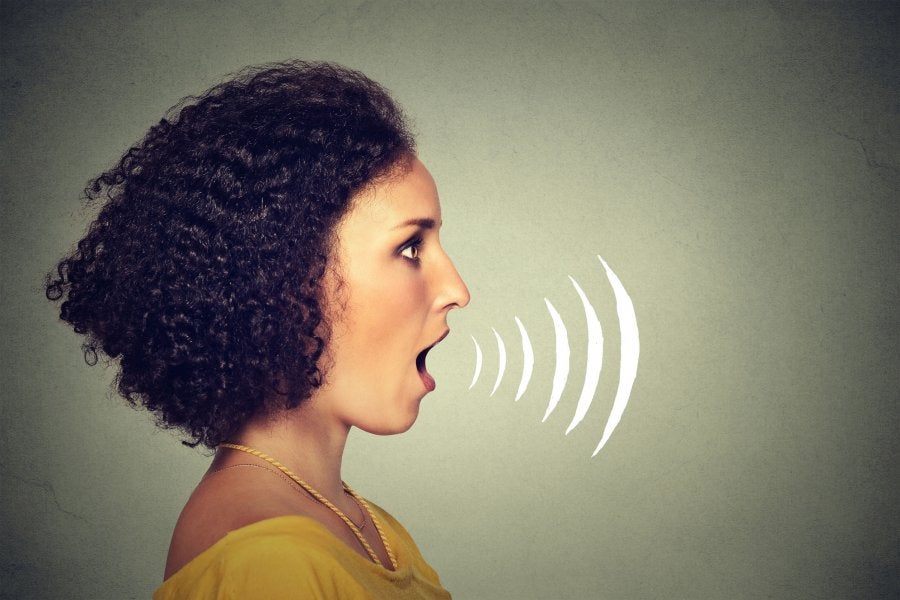How does the ear work?


The sense of hearing gives us the ability to perceive the sounds of the outside world through the hearing aid. To ensure that our ear functions properly for a long time, we must take care of it, and to take care of it we need to know what parts make up the ear and how it works.
Shape and composition of the human ear
The act of listening is a rather complex process, as is its anatomy. And, in fact, the best way to understand this process is by analyzing the specific function of each element.
The auricular pavilion or pinna is in charge of capturing the sound waves around us, which are still vibrations of the air, and from there they pass into the auditory canal. These sound waves make the eardrum vibrate, which in turn causes a chain movement in the ossicles of the middle ear, transferring the vibrations to the cochlea, in the inner ear.
The Vibration of the stirrup, the last of the ossicles, causes an undulating movement in the cochlea liquid, the endolymph, which in turn stimulates microscopic cells called internal and external hair cells.
Parts of the ear
The ear is made up of three parts:
External Ear
It consists of two main parts:
- Auricular pavilion (ear) that is responsible for the uptake of the ear and consists of several parts: Hélix, Antihélix, Trago, Antitrago, Concha, Lobe.
- External auditory canal: extending from the depth of the shell to the tympanic membrane.
Middle Ear
It is a cavity of the temporal bone of the skull, occupied by air and covered by a mucous membrane. It is limited laterally by the tympanic membrane and the oval window of the inner ear.
Its main function is to transmit sound vibrations from the tympanic membrane through the middle ear cavity to the inner ear, through three ossicles: hammer, anvil and stapes.
Inner Ear
It is situated between the middle ear and the auditory nerve. Its function is to transform the mechanical signals perceived by the middle ear, originated in turn by the sound captured by the external ear, into electrical signals that transfer information to the brain.

What are sound waves?
Hearing is our perception of mechanical energy transported through so-called sound waves that travel through solids, air and water. These sound waves represent alternating changes in pressure and the interpretation of their characteristics allows the nervous system to differentiate sounds.
The particles that make up the air vibrate and transmit their oscillation. For this to happen it is necessary to have an elastic medium (water, air or a solid) since sound waves do not propagate in a vacuum.
Characteristics of sound waves
Frequency
Number of oscillations per second. The time the sound wave takes to complete a cycle is measured in waves per second (Hz). Our brain translates it into the tone of a sound (it indicates how low or high it is). The lower the wave frequency, the lower the sound and the higher the frequency, the higher the frequency.
The human ear is able to perceive frequencies between 20 and 20,000 Hz. (Human auditory spectrum).
These cells are "programmed" to respond to different sounds based on their tone or frequency; the higher tones will stimulate the hair cells at the bottom of the cochlea, while the lower sounds will cause the cells at the top of the cochlea to react.
Amplitude
It measures the height of the wave and is directly related to the intensity or strength of a sound. It is measured in Decibels (dB). The different activities of daily life generate sounds of different intensities, being able to be harmful the exposure (especially, of prolonged form) to high levels of dBs.
How do we hear?
When a sound is produced, its waves travel through the air until they collide with the auricular pavilion. This picks up the waves and directs them to the external auditory canal, to then reach the tympanic membrane, making it vibrate. The hammer moves while moving the anvil and stirrup. The latter is fixed to the oval window of the cochlea, thus transmitting vibrations.
The eustachian tube (a small tube that connects the throat to the middle ear) makes it easier for air to enter and exit the tympanic cavity to match the middle ear pressure with the external pressure.
The cochlea is a tubular system located within the temporal bone that consists of three parts: vestibular ramp, cochlear duct, and tympanic ramp. The waves travel through the fluid inside the cochlea, stimulating so-called hair cells, which transform them into complex electrical signals that are transmitted through the auditory nerve to the brain, which interprets this information as sound.
This process is completed when each of these tiny cells generates a nerve impulse in accordance with the sound it has perceived, and this set of nerve impulses travels almost instantaneously through the auditory nerve to the auditory cortex of the brain, where these impulses are converted into interpretable and interpreted sound.
As you can see, it is a complex and delicate process (in fact, we have slightly simplified it to make it easier to understand, as each of the processes involved is really detailed), and that is why we must pay so much attention to our ears being in perfect condition; if one of the gears fails, the whole suffers. So don't hesitate, take good care of your ears, and in case of doubt, contact us and we will solve all your questions without problems.





























